EPA scientists work with Tribal Nations to protect communities from radon and promote healthier air quality
You might know that the U.S. Environmental Protection Agency’s mission is to protect human health and the environment. But did you know our scientists are doing research that benefits vulnerable communities? Air quality specialists Julia Carlstad and Amber Batchelder are researching the use of do-it-yourself air cleaners to improve indoor air quality and health for the Hoopa Valley Tribe in California, while geologists Herb Levine and Bill Brandon are helping the Navajo Nation in Arizona detect radon in groundwater. These research projects mean a lot to me because of my personal experiences working with some of these communities.
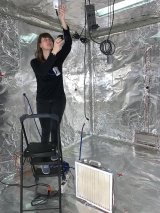
In 2020, I served as an assistant public information officer for EPA’s emergency response to the California wildfires. Working remotely, I called residents whose properties had burned to tell them about EPA’s role of removing household hazardous waste as part of the post-fire cleanup.
“I’ve lost everything,” I often heard. I was moved by the courage of those who’d endured so much. Although I empathized with them, as someone who almost lost my own home to a wildfire, I could not claim to know what they were going through. Some had already suffered devastating losses from previous wildfires.
Research findings on using DIY air cleaners, I believe, could have helped these residents and others protect themselves from at least one of the dangers posed by wildfires.
Working to Protect Hoopa Valley Tribe Health
As climate change intensifies, wildfires are the new normal in the western United States. During 2021, wildfires burned almost 3 million acres in California. Compounding this, people who get COVID-19 are more sensitive to smoke exposure during their recovery, and recent studies suggest smoke exposure can make people more susceptible to contracting COVID-19. In addition, communities overburdened by pollution are especially vulnerable to wildfire smoke.
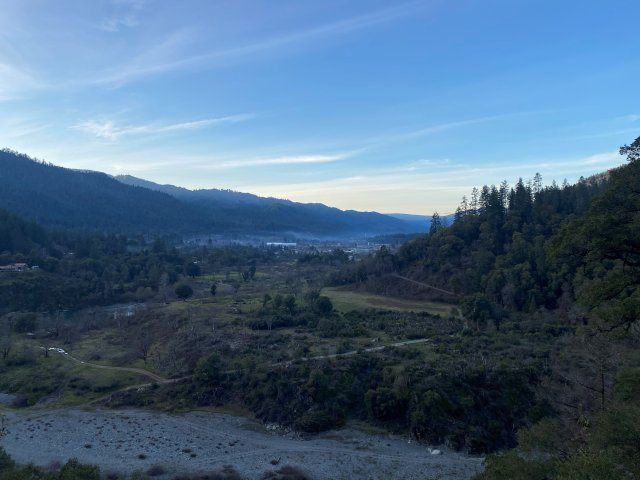
“The Hoopa Valley Tribal Reservation in Humboldt County is an ideal location for this study. Their geographic location exposes them to unhealthy, very unhealthy, and hazardous air quality for many months of the year. This is why it’s important to be ‘Smoke Ready’ before wildfires hit. Living in fire-prone areas in the West, we know to be fire-ready. We clear our properties of hazardous fuel build-up and have an evacuation plan. But, we also have to be ‘Smoke Ready.’ Smoke is a fact of life now. We have to be prepared.”
Katie Stewart, former EPA air quality specialist
Many communities may not have affordable options to reduce smoke exposure. Commercial in-home air cleaners are sometimes unaffordable and unavailable. A DIY air cleaner, however, is inexpensive and easy to build, made by attaching an air filter to a box fan with tape, brackets, or a bungee cord. Julia and Amber are part of EPA’s regional team working with the Hoopa Valley Tribe to field-test these air cleaners in their homes. They will measure how well the air cleaners work, how they impact air quality, and if they help protect people’s health.
Working to Protect Navajo Nation Health
Meanwhile, Herb and Bill research technology to detect radon in groundwater to help the Navajo Nation. “All people deserve access to safe drinking water. It’s key for every community,” Herb emphasized.
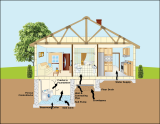
His statement resonates with me. From 2014-2016, I worked as a park ranger at Sunset Crater Volcano National Monument in Flagstaff, Arizona. Sheer cliffs, extinct volcanoes, and deep canyons jut out there like the bones of the Earth. Along with striking geology, Flagstaff is a confluence of cultures where different tribal groups live. Some The Navajo spoke to me about their deep spiritual connection to their homeland, known as the Four Corners where New Mexico, Arizona, Utah, and Colorado intersect, and some mentioned they had no access to running water on their land.
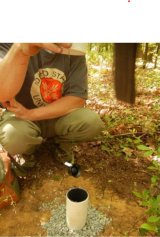
They also have to contend with radon exposure. Radon is a gas that occurs naturally and also comes from abandoned uranium mines that pockmark Navajo land. Radon dissolved in groundwater that is used for drinking water can also escape into the air and can enter a structure through cracks. EPA has established radon exposure as the second-leading cause of lung cancer in the United States and may disproportionately affect the Navajo Nation.
There are inexpensive methods for measuring radon levels in structures, but few affordable options exist to detect radon in groundwater. Partnering with the Navajo EPA in Window Rock, Arizona, EPA’s team will place radon detection devices into wells and other water sources throughout a large area. Bill compares this effort “to dropping a fishing lure.” Using traditional radon testing methods, they will then evaluate and compare the results.
Once they evaluate their findings, Bill and Herb will solicit help from citizen scientists to continue this research. Like Julia and Amber, they will share their research findings with local, state, and federal agencies and partners across the country.
I have always found their passion for what EPA employees do and their desire to help vulnerable communities inspiring. I think of those who’ve gone through wildfires and the Navajo who have a deep spiritual connection to their land. This research has the potential to change their lives.
Protect your Health
- Learn about steps you can take to protect yourself from radon exposure.
- Find out how you can be ‘Smoke Ready’ when wildfires occur and read about the latest research on DIY air cleaners.
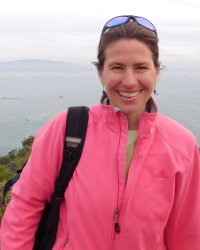
About the Author
Hilary Clark
Writer-Editor
Region 9
Hilary Clark is a writer-editor for EPA's Pacific Southwest Region. She has also served as a community involvement coordinator doing public outreach for the clean up of Superfund sites. Before working at EPA, Hilary worked as a National Park Service ranger at various sites across the country. Her experience has made her passionate about protecting wild places and wildlife.
Editor’s Note: The views expressed here are intended to explain EPA policy. They do not change anyone’s rights or obligations. You may share this article. However, please do not change the title or the content, or remove EPA’s identity as the author. If you do make substantive changes, please do not attribute the edited title or content to EPA or the author.
EPA’s official web site is www.epa.gov. Some links on this page may redirect users from the EPA website to specific content on a non-EPA, third-party site. In doing so, EPA is directing you only to the specific content referenced at the time of publication, not to any other content that may appear on the same webpage or elsewhere on the third-party site, or be added at a later date.
EPA is providing this link for informational purposes only. EPA cannot attest to the accuracy of non-EPA information provided by any third-party sites or any other linked site. EPA does not endorse any non-government websites, companies, internet applications or any policies or information expressed therein.
